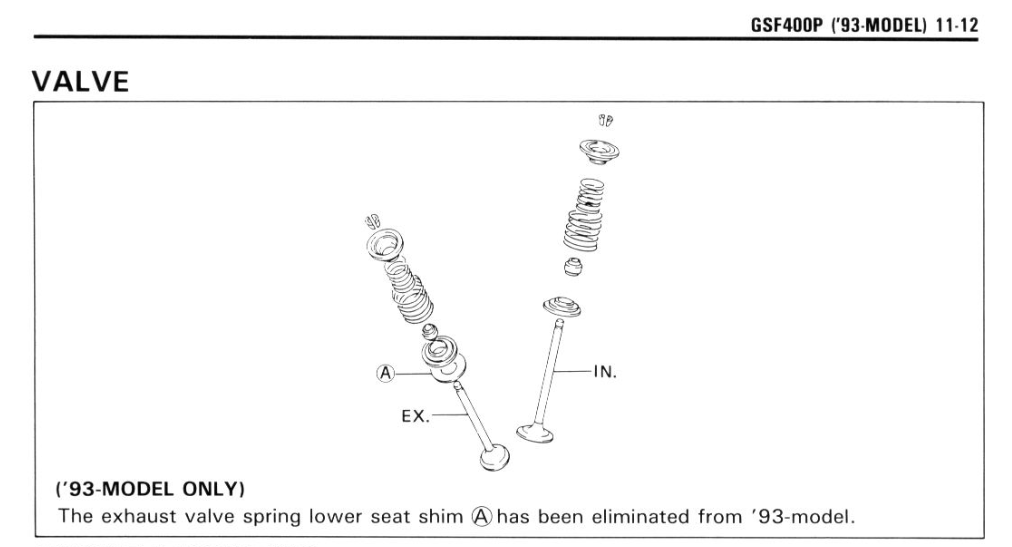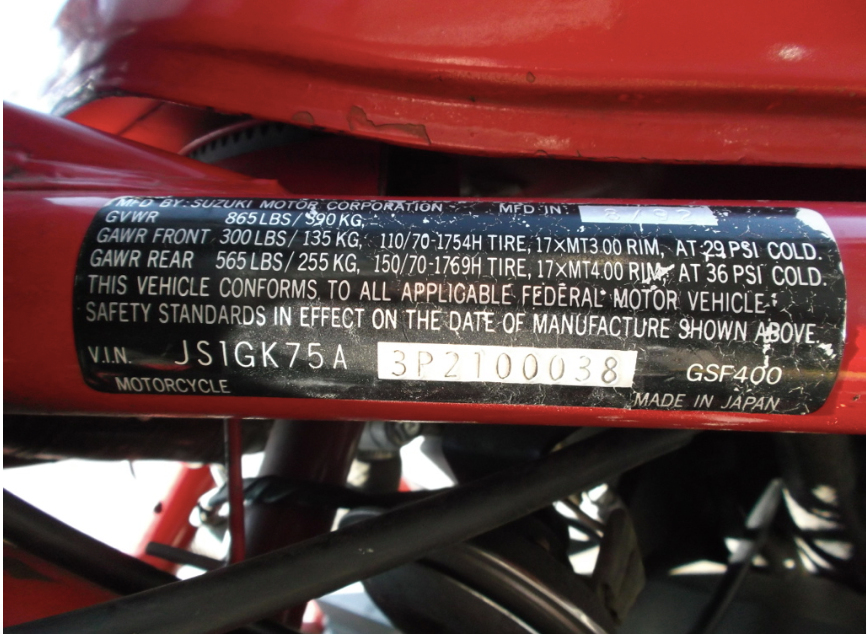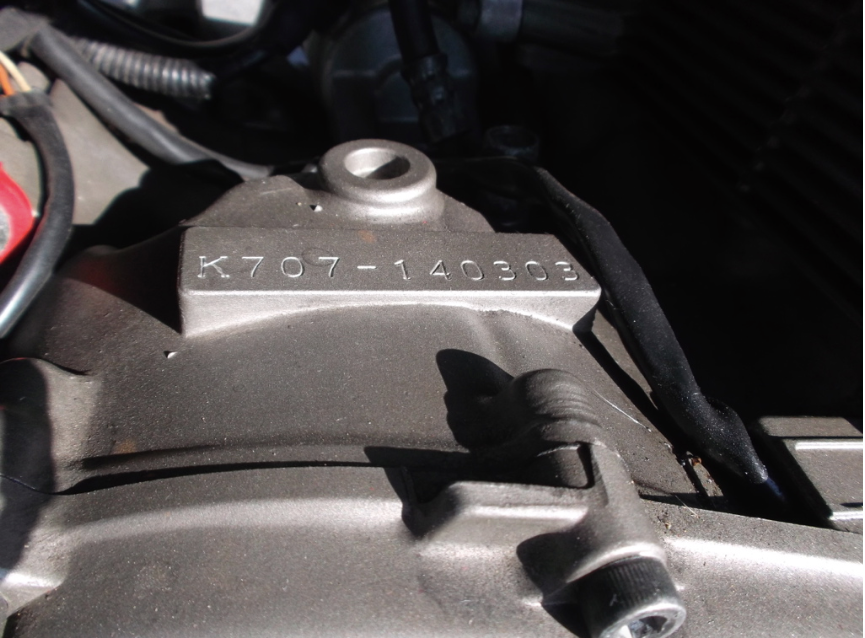I got the valve cover off to get a look at the valves. None of the lock nuts were loose. The specs listed on the side of the frame say .13 - .18 mm for the intake and .20 - .25 mm for the exhaust.
Are you sure that your Bandit 400 is a 1992 model? I ask because those valve clearance specifications you quoted (from a frame sticker on the bike) are for the 1993 Bandit 400 engine.
On the 1993 Bandit 400 Suzuki de-tuned the engine slightly, with changes made to the camshaft profiles that reduced valve lift on both intake and exhaust. These changes resulted in horsepower being reduced from 59hp to 53hp.
With the reduction in valve lift the Suzuki engineers were able to remove (delete) a shim from underneath each of the exhaust valve spring sets because the reduced valve lift of the 1993 Bandit engine didn't require as much valve spring force to insure valve closure at high RPMs. Not enough spring force can result in "valve float" at high RPM which could result in all sorts of bad things like overheated valves or valves hitting the piston top.
Here's a couple of screenshots from the 1993 model year supplement to the Suzuki GSF400 Bandit Service Manual.
This shot shows the deletion of the shim under the exhaust valve springs:

This shot shows (with asterisks to show which values had changed from the previous year model) some of the valve train specifications that were changed from the 1992 year model engine to the 1993 year model engine (on the 1993 engine the valve lift was reduced on the intake from 7.6mm to 6.2mm and the exhaust valve lift was reduced from 7.0mm to 6.2mm):

The above screenshot also shows the changed valve clearance specifications for the 1993 year model engine. The reduction in valve lift on the 53hp engines lessened the rather critical nature of the valve adjustment on the 59hp engine. The valve clearance setting specifications on the 1991-1992 engines are like a highly tuned racing engine.
And... just in case you're saying to yourself, "But my Bandit 400's VIN sticker says it was manufactured in 1992!" I have this picture to show you: This is a picture of the VIN sticker of my 1993 Bandit 400 which indicates it was assembled in August of 1992 but I can prove that it was without a doubt built as a 1993 model (the bike's engine has all of the 1993 differences from the 1991-1992 engines).

It's a bit hard to read but the date in the upper right hand corner of my VIN sticker shows "8/92".
So... if your engine serial number is later than my engine's number you can be sure yours is also a 1993 engine:
